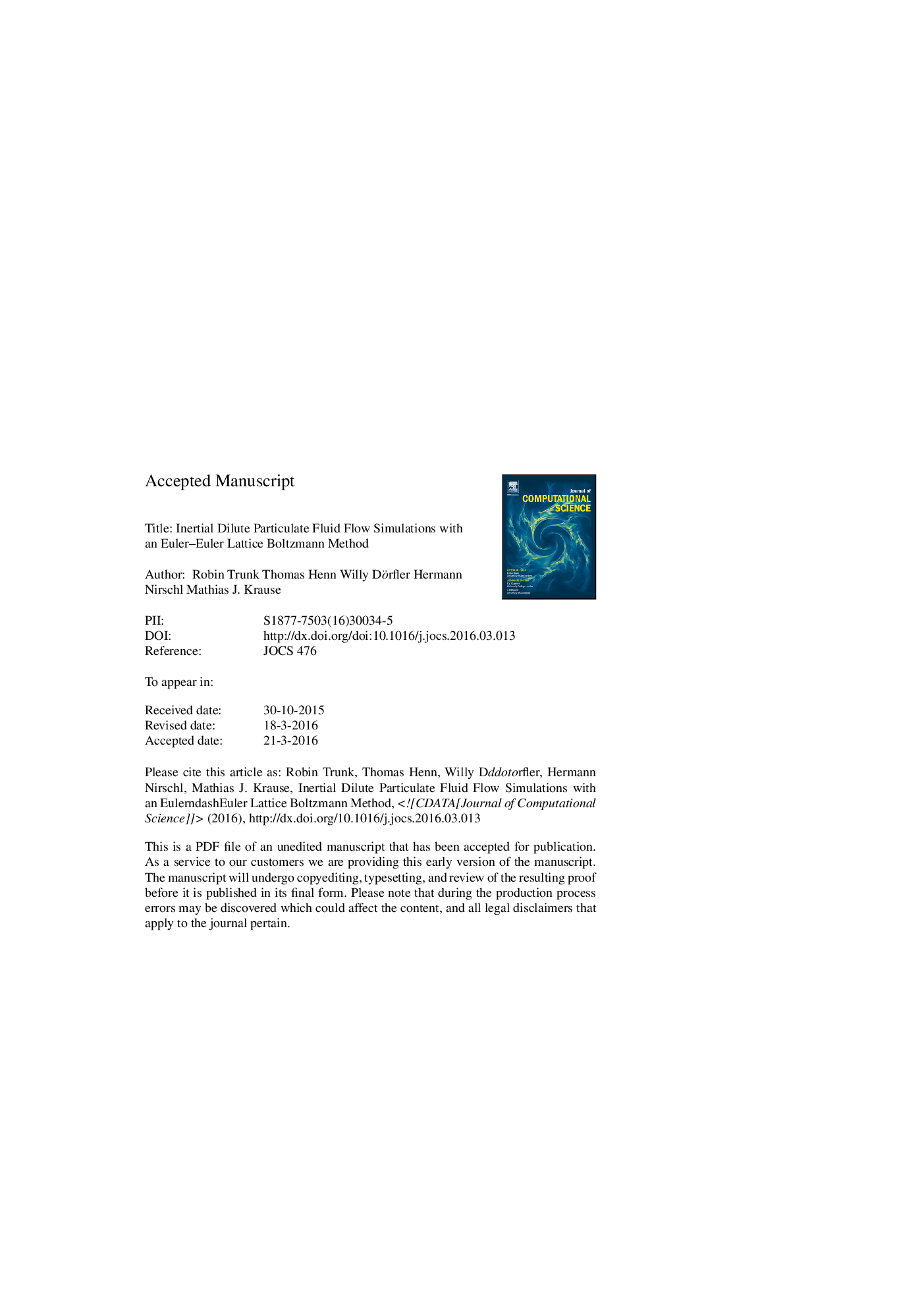| Article ID | Journal | Published Year | Pages | File Type |
|---|---|---|---|---|
| 4951092 | Journal of Computational Science | 2016 | 30 Pages |
Abstract
Systems of dilute particulates, affected by inertia, with sizes in the range of 1 μm to 1 mm are of great interest in the design of many mechanical devices. For the simulation of such particle-laden flows most often Euler-Lagrange approaches are applied, that yield massive computational costs, if a high accuracy, e.g. in the deposition pattern is desired. In contrast to that, Euler-Euler approaches scale only with the resolution of the chosen discretization in computational effort. However, the stabilization required for the considered convection-dominated regime and in general the formulation of boundary conditions on this macroscopic scale are more challenging. In this article, a stabilized extension to the Euler-Euler approach is proposed, together with appropriate boundary conditions, to also account for drag forces and yield viable results for a wide range of Péclet and Reynolds numbers. The two-component system is solved using a lattice Boltzmann method and the resulting scheme is applied to a simplified geometry of a human lungs bifurcation. The numerical results are validated by comparison to other works, that apply an Euler-Lagrange approach, regarding the deposition and its dependency on the Stokes number. After consideration of the effect of artificial diffusion, the results are found to be in excellent agreement.
Related Topics
Physical Sciences and Engineering
Computer Science
Computational Theory and Mathematics
Authors
Robin Trunk, Thomas Henn, Willy Dörfler, Hermann Nirschl, Mathias J. Krause,
